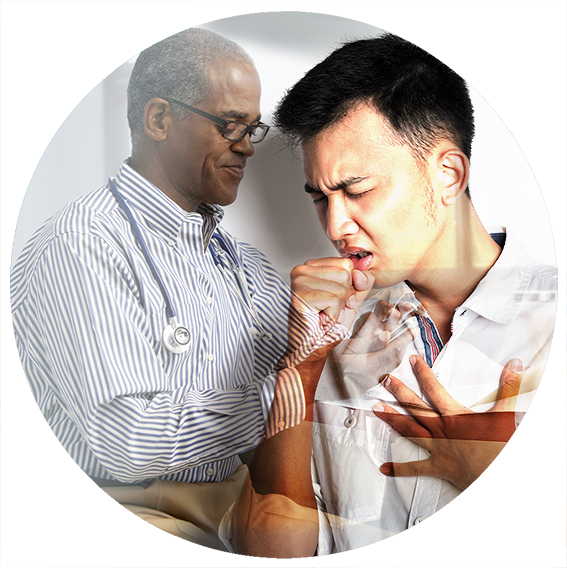Virtual ward
Tutorial presented by Dr Jane Armstrong, GP in CTMUHB and Clinical Director for Primary Care.
It is difficult to determine which patients are likely to deteriorate requiring admission to hospital, and which patients will safely recover at home. A virtual ward has been established in some areas as a mechanism to closely monitor patient symptoms, with safety netting and SpO2 monitoring whilst they remain at home self-isolating.
Virtual wards may range from periodic phone call follow-up by the support team, or advising patients to contact their GP should their symptoms get worse, or if their SpO2 drops below 92% (where a SpO2 monitor has been issued to them).
Typically, those requiring virtual ward monitoring include:
- Patients who are over the age of 65 years
- Patients with co-morbidities
- Patients in the BAME group
- Patients with SpO2 above 92% and below 95%
- Patients returned from ED back in to the community
- Some patients after discharge from hospital
Some Health Boards, clusters, community services and GMS practices already provide virtual wards. They differ in structure and functions, but all aim to keep patients safe at home and out of hospital unless they deteriorate. Already some practices and clusters have developed their own COVID-19 virtual wards to enable patients to self-monitor their oxygen saturations and symptoms. This means that the GP or nurse has access to more information to enable them to triage the patient and determine if a face to face assessment is required. It is about supporting self-monitoring, not creating work for the clinicians.
Evidence from pilots in England has shown that patients are highly satisfied with the virtual ward approach. Clinicians involved are also very supportive. There is no direct evidence that there is a reduction in admissions as a result. Figures suggest that 10% of people in a virtual ward end up being reassessed and 1% die.
We recommend that you discuss with your local Primary Care Management Team in the Health Board how you can develop a virtual ward and get help with evaluation of this service improvement.
Virtual ward
Tutorial presented by Dr Jane Armstrong, GP in CTMUHB and Clinical Director for Primary Care.
It is difficult to determine which patients are likely to deteriorate requiring admission to hospital, and which patients will safely recover at home. A virtual ward has been established in some areas as a mechanism to closely monitor patient symptoms, with safety netting and SpO2 monitoring whilst they remain at home self-isolating.
Virtual wards may range from periodic phone call follow-up by the support team, or advising patients to contact their GP should their symptoms get worse, or if their SpO2 drops below 92% (where a SpO2 monitor has been issued to them).
Typically, those requiring virtual ward monitoring include:
- Patients who are over the age of 65 years
- Patients with co-morbidities
- Patients in the BAME group
- Patients with SpO2 above 92% and below 95%
- Patients returned from ED back in to the community
- Some patients after discharge from hospital
Some Health Boards, clusters, community services and GMS practices already provide virtual wards. They differ in structure and functions, but all aim to keep patients safe at home and out of hospital unless they deteriorate. Already some practices and clusters have developed their own COVID-19 virtual wards to enable patients to self-monitor their oxygen saturations and symptoms. This means that the GP or nurse has access to more information to enable them to triage the patient and determine if a face to face assessment is required. It is about supporting self-monitoring, not creating work for the clinicians.
Evidence from pilots in England has shown that patients are highly satisfied with the virtual ward approach. Clinicians involved are also very supportive. There is no direct evidence that there is a reduction in admissions as a result. Figures suggest that 10% of people in a virtual ward end up being reassessed and 1% die.
We recommend that you discuss with your local Primary Care Management Team in the Health Board how you can develop a virtual ward and get help with evaluation of this service improvement.
Resources
All Wales Guideline for the Management of patients with confirmed or suspected COVID-19 in the Community
More like this

Meeting the needs of people with learning disabilities during the COVID-19 pandemic

Monitoring oxygen saturations in COVID-19


